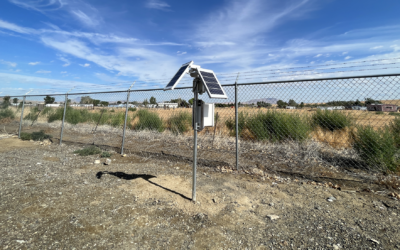Gai Elhanan, M.D., is a health data scientist with the Division of Earth and Ecosystems Sciences at the Desert Research Institute in Reno. He specializes in health care informatics, and is a physician with more than 12 years of experience in internal medicine and infectious diseases. Gai received his M.D from Tel Aviv University and his M.A in Medical Informatics from Columbia University. He also completed a NIH post-doctoral fellowship at the Medical Informatics Department, New York Presbyterian Medical Center/Columbia University. In his free time, Gai enjoys listening to jazz and classical music, flying radio-controlled airplanes, and doing woodwork.
What do you do here at DRI?
I came to DRI in 2017 to work with the Healthy Nevada Project. I am a physician by training, so, I am the guy within the Healthy Nevada Project that gives the clinical perspective on the data and questions. I provide the viewpoint of a health professional, whereas the other people on the team are geneticists, data scientists, or have backgrounds in other scientific fields. We sometimes collaborate with the physicians at Renown, cardiologists or other specialists, but they are very busy taking care of their many patients; we can’t really utilize them to the extent we would like. So, that is exactly where I come in. It might not be that I am the most up-to-date in every field of medicine, but I bring the clinical perspectives and medical knowledge to the team.
One of your specialties is in health care informatics. Can you tell us a little bit about this field of study?
Yes, I’ve been involved with health informatics for 20-something years now. Basically, it’s a very broad field that investigates how data can be used to improve health care. In health care, we have vast amounts of data, and we don’t use it optimally. When you visit a doctor, everything is coded – your diagnosis, procedures, medical services. These codes are mostly used for billing purposes, but we can also extract clinical information for research. For example, We can utilize the genomic information we collect from the HNP participants and correlate it to clinical findings and diagnoses in the electronic medical records to try and predict risk and factors that are associated with outcomes of certain conditions.
In health care informatics, we look at how data should be presented for research or patients or clinicians, and how to draw conclusions from the data. By improving the utilization of the data within the electronic health record, we improve the quality and efficiency of the care provided, we improve the ability to do research on the data and, overall we improve the health of the population. How to get the right data, how to organize it, and how to present it optimally for each task are all very important things.
What are you working on right now with the Healthy Nevada Project?
Right now, with the Healthy Nevada Project, we’re trying to improve participation for specific groups of individuals. Originally the Healthy Nevada Project was testing whoever walked in, they were encouraged to provide their saliva and join the project. But now, for several reasons, we’re also trying to improve targeted recruiting in order to better represent the actual population of the region. So, we’re trying to identify who might be good potential participant for the project, and work with Renown’s research coordinators and ambassadors for the project to reach out to people who we would like to have participate.
I am also working on a project with Gilead, the pharmaceutical company, concerning a condition called NASH (non-alcoholic steatohepatitis). NASH affects a significant portion of the population here in Northern Nevada, and can result in life threatening outcomes. This is a strategic collaboration to collect and analyze genetic and electronic health data that can enhance the understanding of NASH and potentially inform development of treatment options for the disease.
How did you end up here at DRI?
I did my medical training in Israel, and also did my residency there. We ended up in the U.S. because my wife is originally from the States. She is a physician as well, a pediatrician and an adolescent medicine specialist. I decided that I didn’t want to practice medicine in the U.S., I wanted to do something else. So, in 1995, I got a NIH grant to do a postdoc fellowship at Columbia University in New York. I got a master’s degree there in medical informatics. We came to Reno a few years ago when my wife was offered a position at Renown, and that’s when I started at DRI with the Healthy Nevada Project. Her position didn’t work out and she went back to New York, but I like the potential in the Healthy Nevada Project and the group of people I’m working with so I stayed with the DRI team to keep doing my work. The team here is a really nice group of people.
To learn more about the Healthy Nevada Project, please visit: https://www.dri.edu/project/healthy-nevada-project/
To learn more about Gai’s work with the Renown Institute of Health Innovation (Renown IHI), please visit: https://www.dri.edu/renown-ihi/


